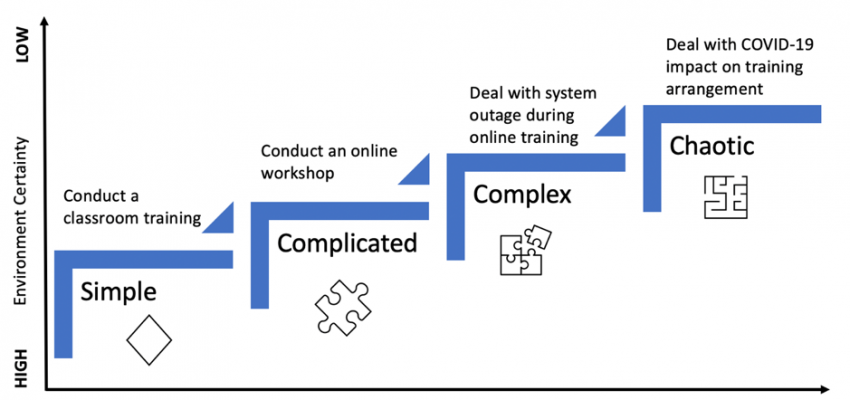
Complex Problem Solving | Design Thinking as a Complex Problem-Solving Skill
Complex Problem Solving | Design Thinking as a Complex Problem-Solving Skill
Article written by Mr. SF Choong (also published in Medium.com)
-
Why are we doing Design Thinking?
-
Are we doing it right for the right purpose?
We are living in a VUCA (Volatile, Uncertainty, Complex, Ambiguous) world. Is the traditional structured, predictable and procedural problem-solving approach, able to deal with the complex problem?

Photo: Photo by Magda Ehlers from Pexels
The Complex Operation Contexts That We Live in
Things or events around us are operating in four contexts — Simple, Complicated, Complex and Chaotic. We are all accustomed to solving simple to complicated problems which we are certain about the environment we are operating in. We could very much predict the outcome of the activities we carry out in the environment that we are familiar with.
Example: Conducting a classroom teaching with standard format is a simple task. Conducting an online workshop is complicated, but with reference to previous experiences, new advent of online teaching technology though complicated it is not difficult to handle. When dealing with the complex or chaotic problem, for example dealing with system outage during online training or dealing with COVID-19 pandemic which is unprecedented, and highly uncertain and unpredictable, the traditional problem-solving approach can no longer handle them.
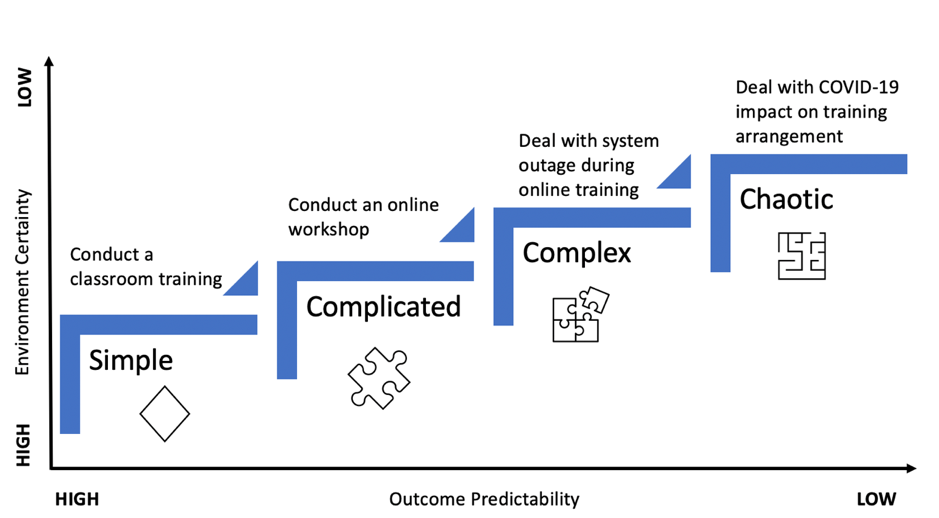
“We need a new problem-solving approach to handle the complex and chaotic problem.”
Design Thinking As A Tool For Complex Problem-Solving
Design Thinking can be described as a mindset and process for creative problem-solving. Many individuals and organizations have adopted the Design Thinking mindset and methodology to develop their problem-solving capability; empowers organizations to successfully tackle the VUCA challenges.
The Design Thinking Mindset
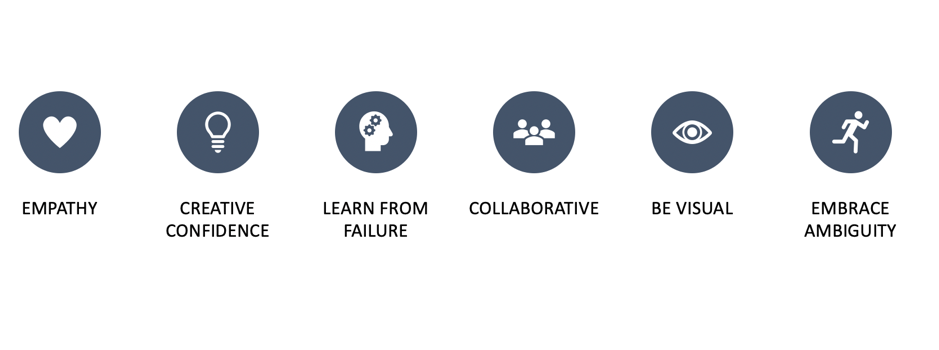
- Empathy, think user first, solve problem from user perspectives
- Creative Confidence. Everyone can be creative, just follow the Design Thinking process
- Learn from failure. Accept failure is the norm. Fail early to succeed sooner
- Collaborative. Get people from different background and personalities to work together
- Be Visual. Use visual object to communicate and share ideas
- Embrace Ambiguity. When facing unknown, go with the flow, following the process, the solution is somewhere out there
The Design Thinking Process
Here is the process designed to support the Design Thinking mindset – The Double Diamond process. The first diamond is known as the “Problem Space” and the second diamond is the “Solution Space”.
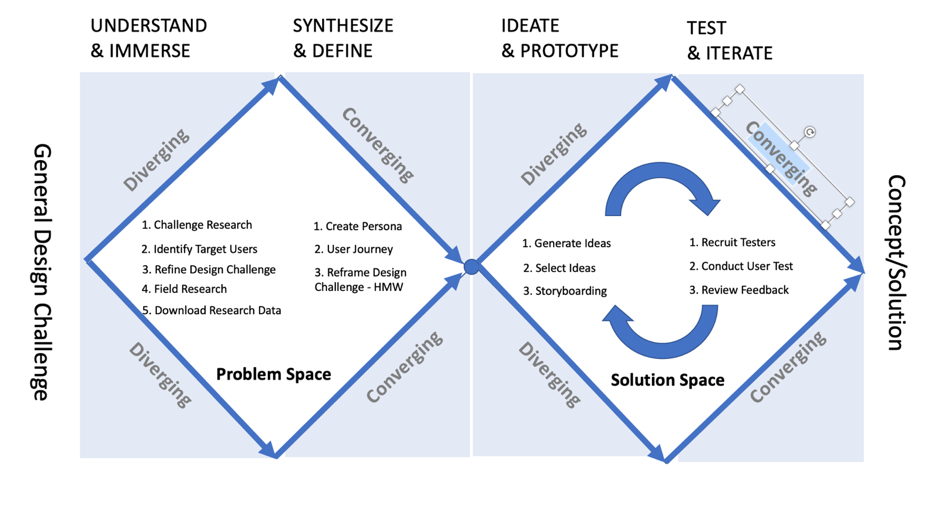
Problem Space
It starts by having a general problem to be solved in hand, usually a complex or chaotic problem. Designers immerse themselves in the context of the problem, identify the users that they are serving and the environment the users is operating in; empathize with the users’ concern through meeting up with users, interview them, observe what they do in their environment. With all the information collected, the design team starts forming a big-picture about the challenge and the users using a tool like a Customer Journey Map to form a big picture of the challenge and users.
Solution Space
With the comprehensive big picture in hand, the design team brainstorm new possibilities as they move into Ideation. Prototyping and taking out the ideas for a test run with real users to collect feedback, learn from the feedback and iterate the process until the team finds the most promising solution to move into action.
Problem-solving mindset and the problem-solving skill are a critical part of daily life both as individuals and organizations. Organizations use Design Thinking to
- Improve existing products or services
- Identify what is distinctive about their products and services
- Identify new products and services opportunities
- Implement a process change or identify strategy direction
- Understand complex problem
- Align with a collaborative organization
Developing and refining this problem-solving skill through training, practice and learning can provide the ability to identify and solve the right problems more effectively with a greater level of complexity and difficulty.
Design Thinking Is About Understanding the Problem and Solving the Right Problem
Many of us when first start learning and practicing the Design Thinking, much of the focus is on getting the ideas or solutions out to solve the problem i.e. focusing on the “solution space”.
Are we missing something? Do we spend enough time to find out why are we solving the problem? Is the problem worth solving? Who are we solving this problem for?
In VUCA world, the problem that we see is complex and multifaceted. Many organizations are using Design Thinking not only to solve (find a solution to) complex problem but most importantly to explore the problem, understand the complexity of the problem and solving the right problem for the right user(s).
 |
“If I had an hour to solve a problem, I’d spend 55 minutes thinking about the problem and 5 minutes thinking about the solutions.”
– Albert Einstein
|
In the Double Diamond Design Thinking process, the fist diamond (the problem space) – is all about understanding the problem by doing research, follow by synthesizing the research data and define the problem with the right size for the team to work on a solution.
Solving the Problem with The Right Size in An Agile Way
In Agile development, we use T-shirt size to indicate the complexity and uncertainty of a user story. Only for those stories with size S or M will go into development. The rest will go back into the product backlog until we have gained a better understanding of the stories with reduced uncertainty i.e. reduce size.
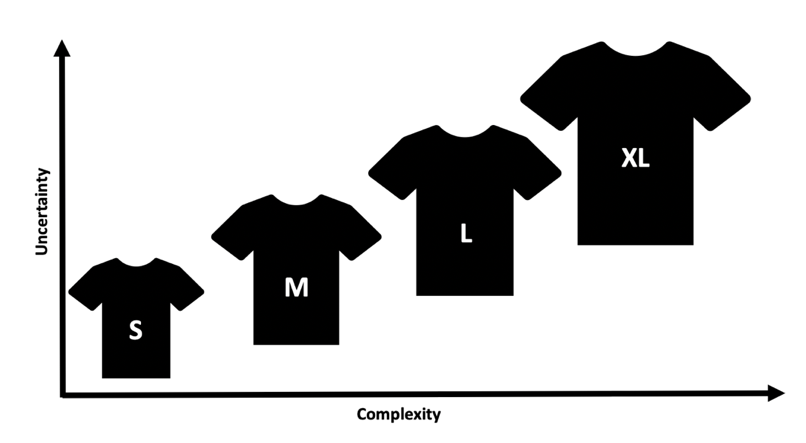
We can adopt the same approach in sizing the problem we are going to solve in Design Thinking.
Before we start the Design Thinking process, we must have a general challenge (problem) to solve. Usually, the challenge comes in size XL – with lots of uncertainty and unknown.
The first two phases of the Design Thinking process (the problem space) are used to “Understand, Synthesize and Define” the challenge progressively into an actionable problem statement with size “M” or “S” for the design team to proceed to the second Diamond (solution space) of the Design Thinking process.
An actionable problem statement must have a User, a Challenge and an Impact we trying to create for the user.
Example:
“How Might We stay employable in a COVID-19 world?”
This is an XL problem statement as there is no clear user, “employable” is too big a scope (uncertainty) for the team to find a solution. Employable means different thing to different demography (e.g. age, sectorial etc.)
“How Might We provide an easy access channel for mid-career switchers to receive career consultation and acquire relevant skill so that they can stay relevant and employable in COVID-19 world?”
This “L” or “M” problem statement. There is a clear user group: Mid-career switchers, the challenge is clear: COVID-19 affect mid-career job seekers. The impact we would like to create for them: An easy channel for mid-career switcher to receive consultation and reskilling.
While progressively going through the Design Thinking process, the team getting more and more insight of the problem and users, they can further refine, reframe the problem statement with new understanding and thus reducing the size of the problem – that has a target user, a clear challenge to address and impact we are trying to create for the user.
Summary
- We need a new problem-solving approach to handle a complex and chaotic problem
- Design Thinking is a mindset and process for creative problem-solving
- Spend more quality time and effort on the Problem Space of the Double Diamond Design Thinking process
- Design Thinking Is about understanding the problem and solving the right problem with the right size.

0 Comments